¶ Scanning Techniques for Thin-Walled Parts
Today, we will discuss the scanning challenges of a complex category of workpieces—thin-walled parts.
As the name suggests, thin-walled parts refer to components with thin structural walls, such as sheet metal, enclosures, etc. The primary difficulty in scanning these parts lies in aligning data from both front and back surfaces. Due to their narrow sidewalls, feature-based alignment is challenging due to insufficient shared features, while marker-based alignment is hindered by the difficulty of attaching markers to the sides. The key to solving this issue lies in using auxiliary methods to achieve accurate data alignment.
¶ Example: Thin-Walled Die-Casting Part

¶ Method 1
- Attach 4-5 markers to both front and back surfaces of the workpiece.


- Place the workpiece vertically on a marker-covered platform (use magnetic markers for flexibility).

- Use "Global Maker" scanning to capture markers on both surfaces, then proceed with point cloud scanning.
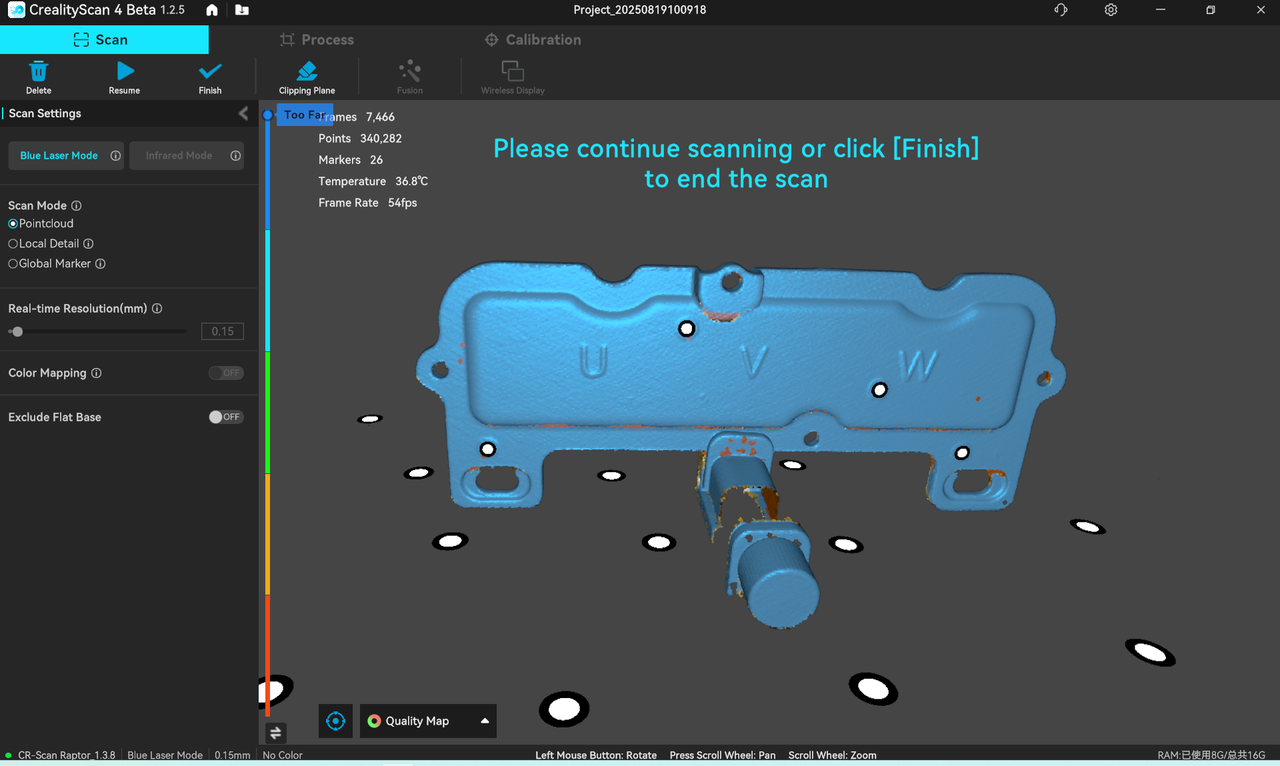
- Randomize the magnetic markers on the platform, lay the workpiece flat, and scan the first set of point cloud data.
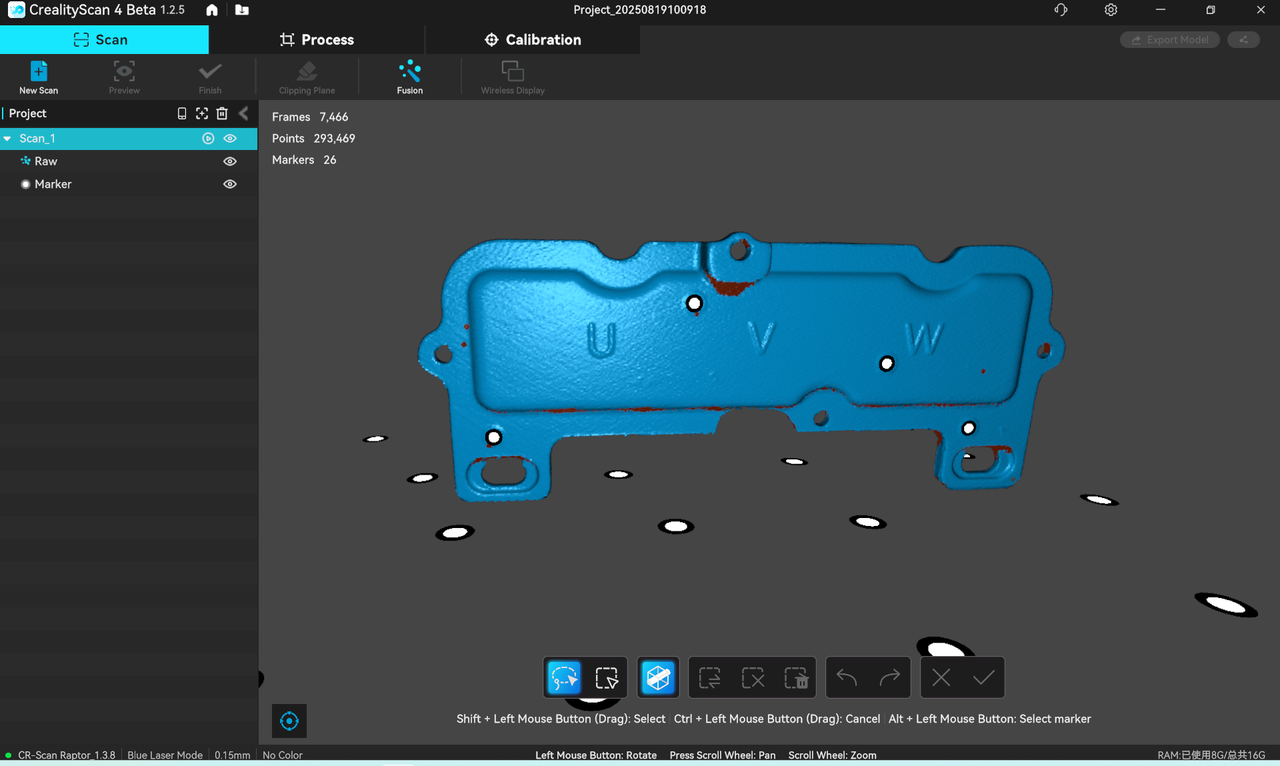
5.Repeat marker randomization, flip the workpiece upside down , and scan the second position until full coverage is achieved.
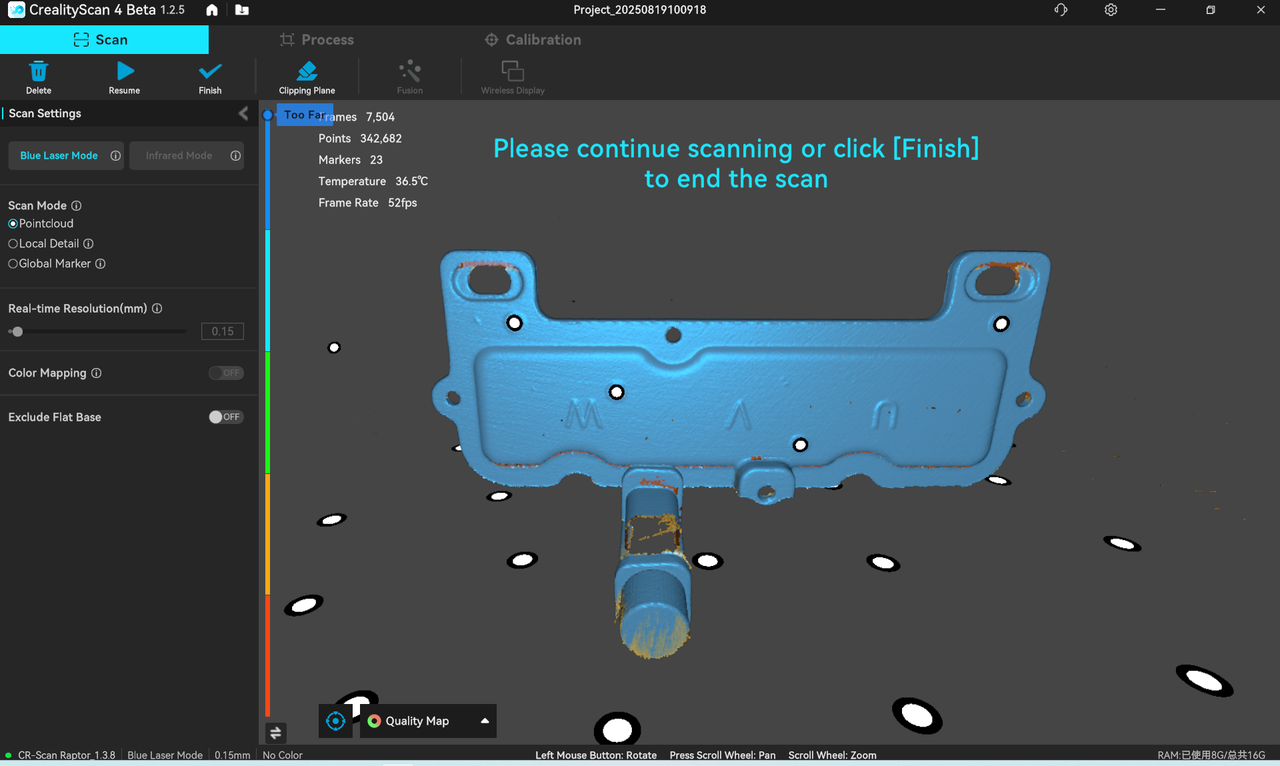
6.Finalize scanning, remove redundant data, and generate the mesh.


¶ Method 2
1.Attach 4-5 markers to one side of the workpiece.

2.Place the workpiece vertically on a marker-covered platform.

- Scan the first set of point cloud data, optimize, and start a new scan.
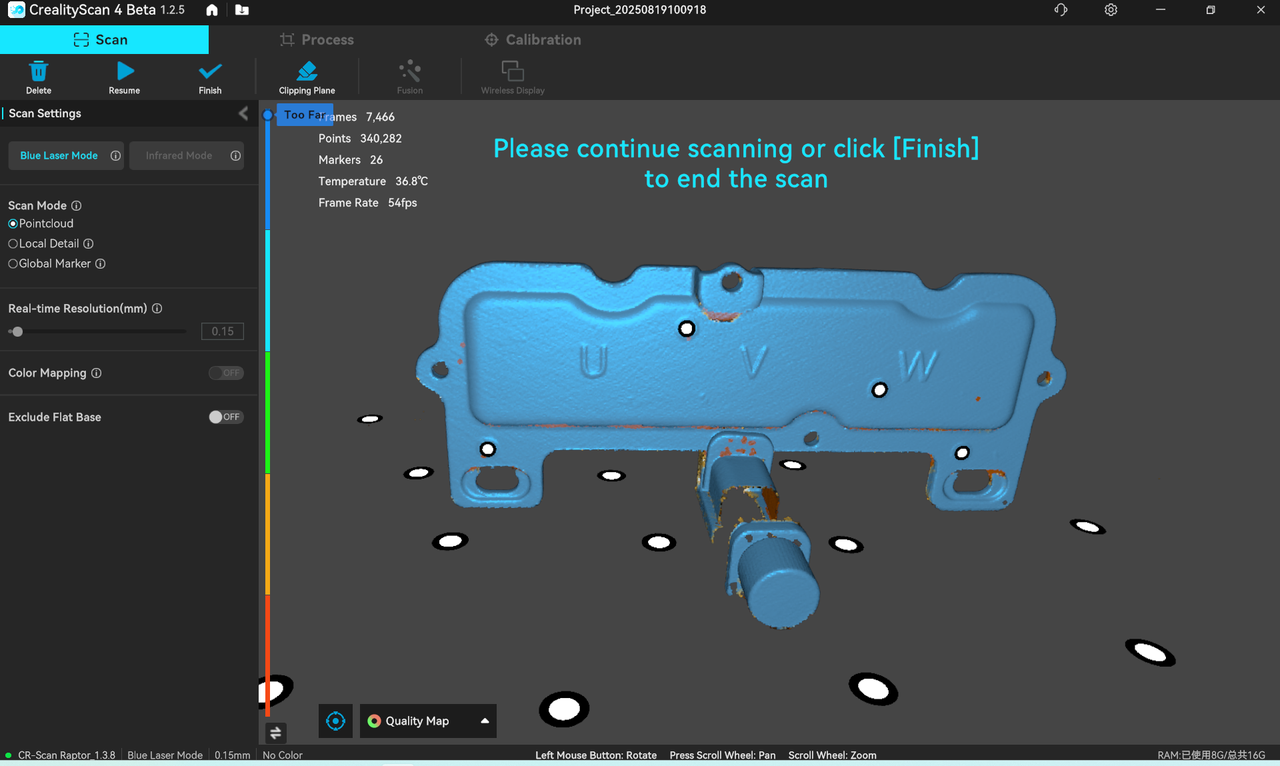
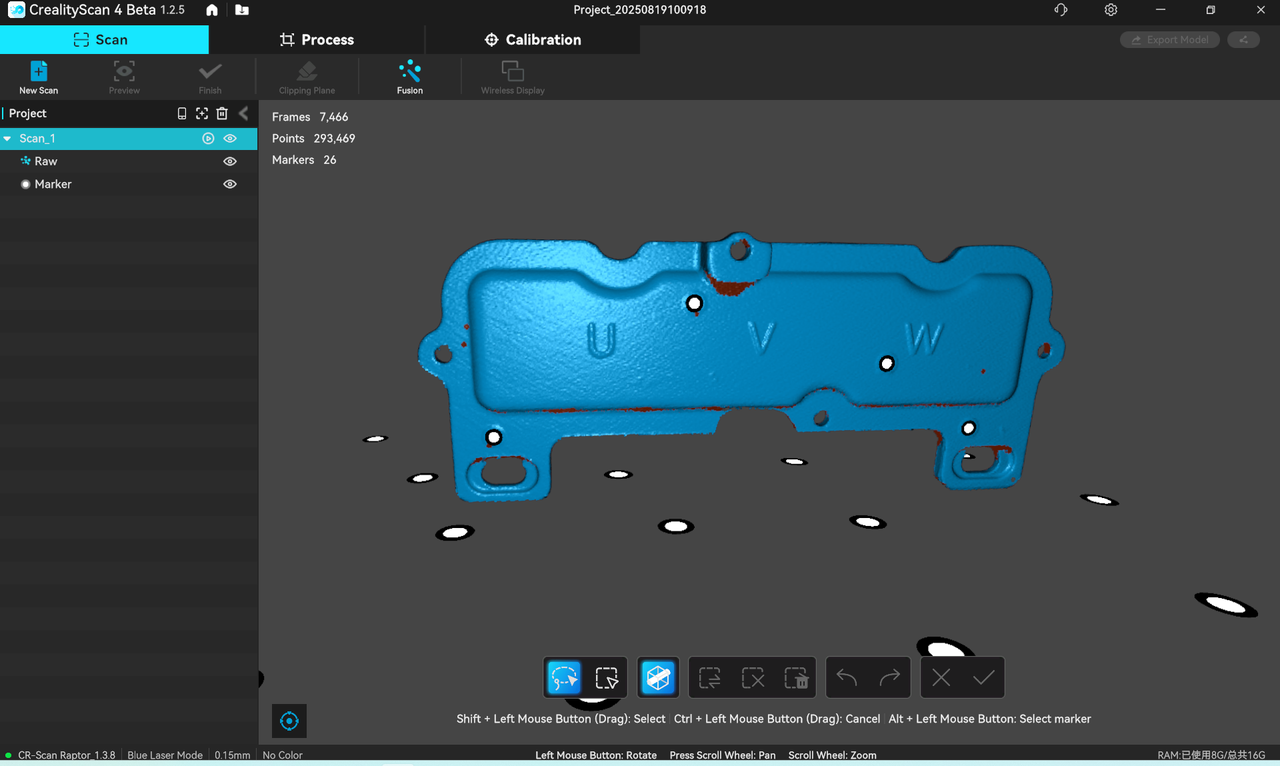
4.Flip the workpiece upside down and scan the second set of data.
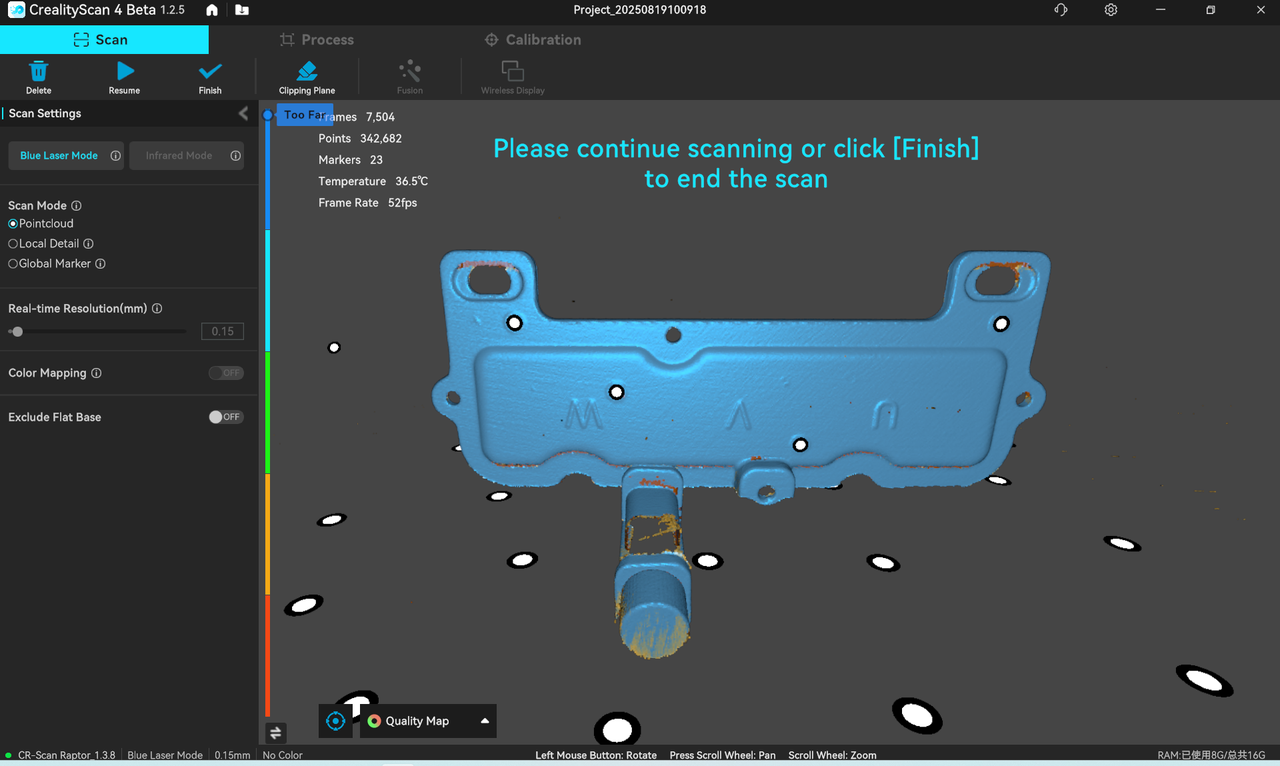
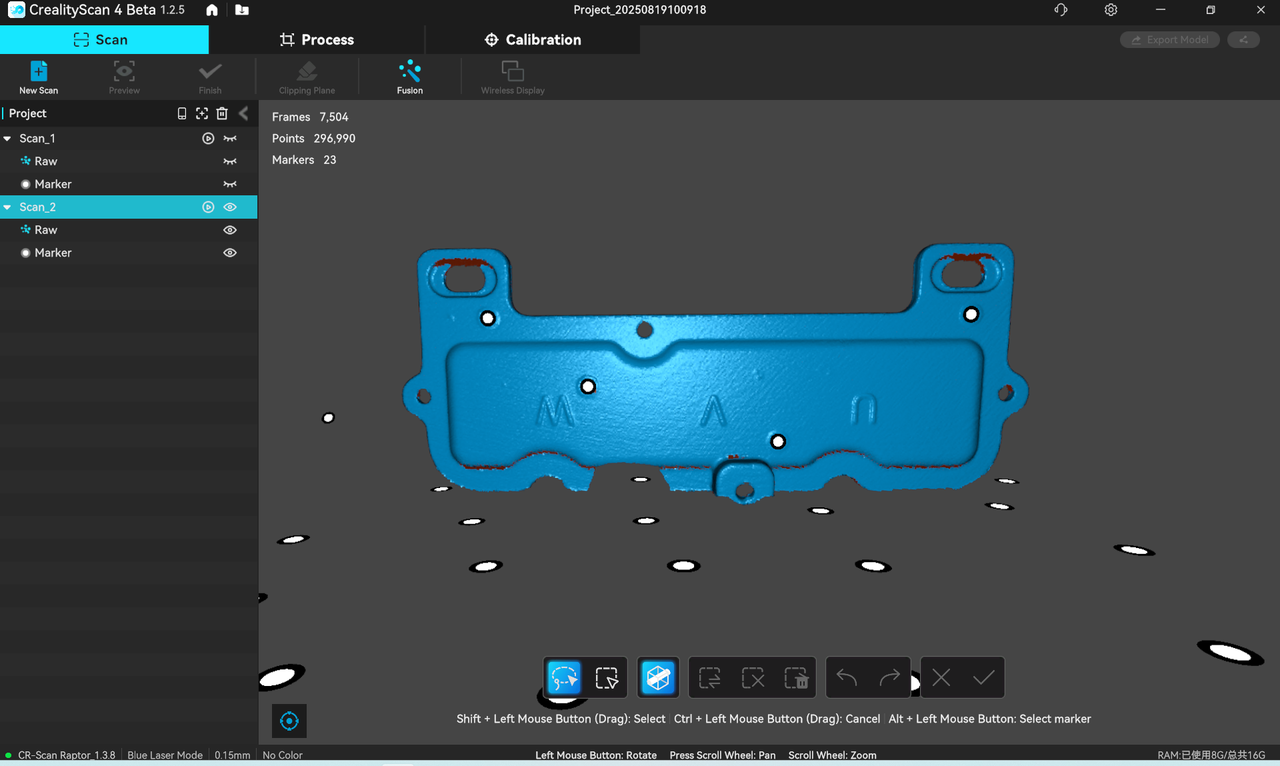
5.Fusion Batch Process of the 2 sets data
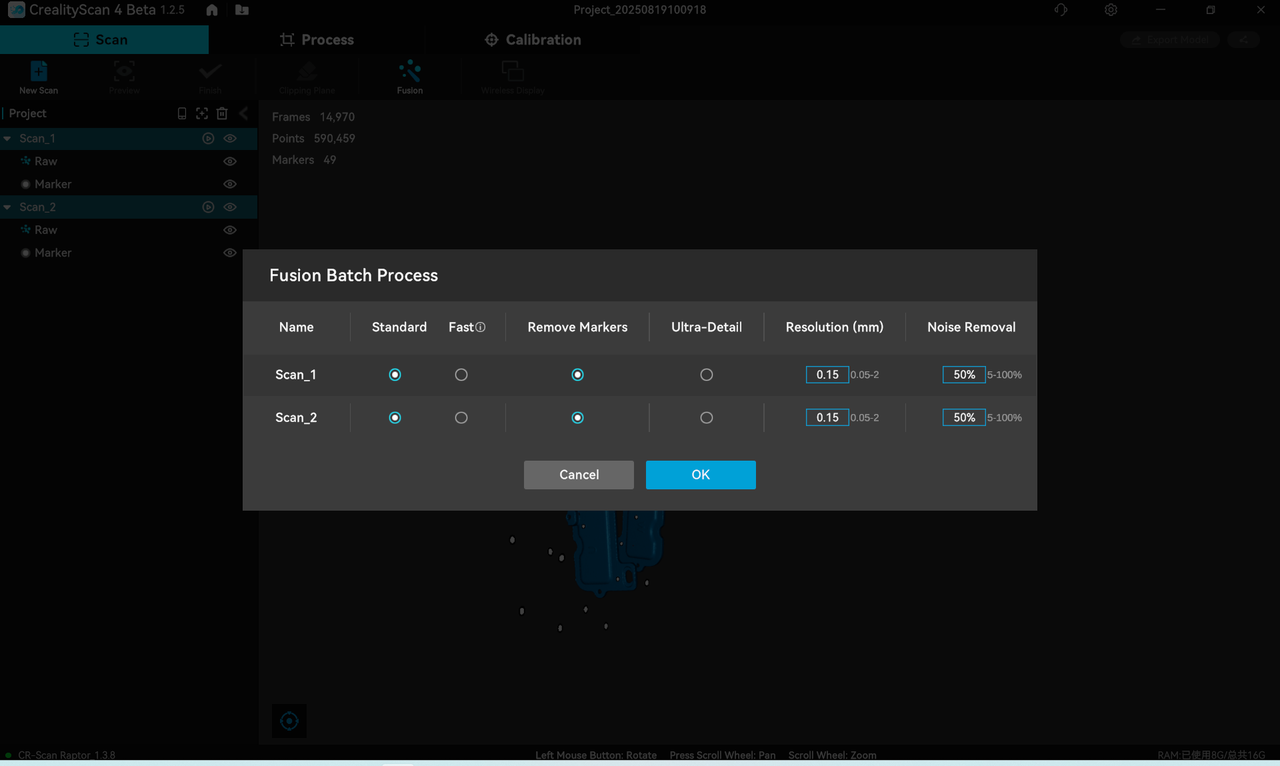
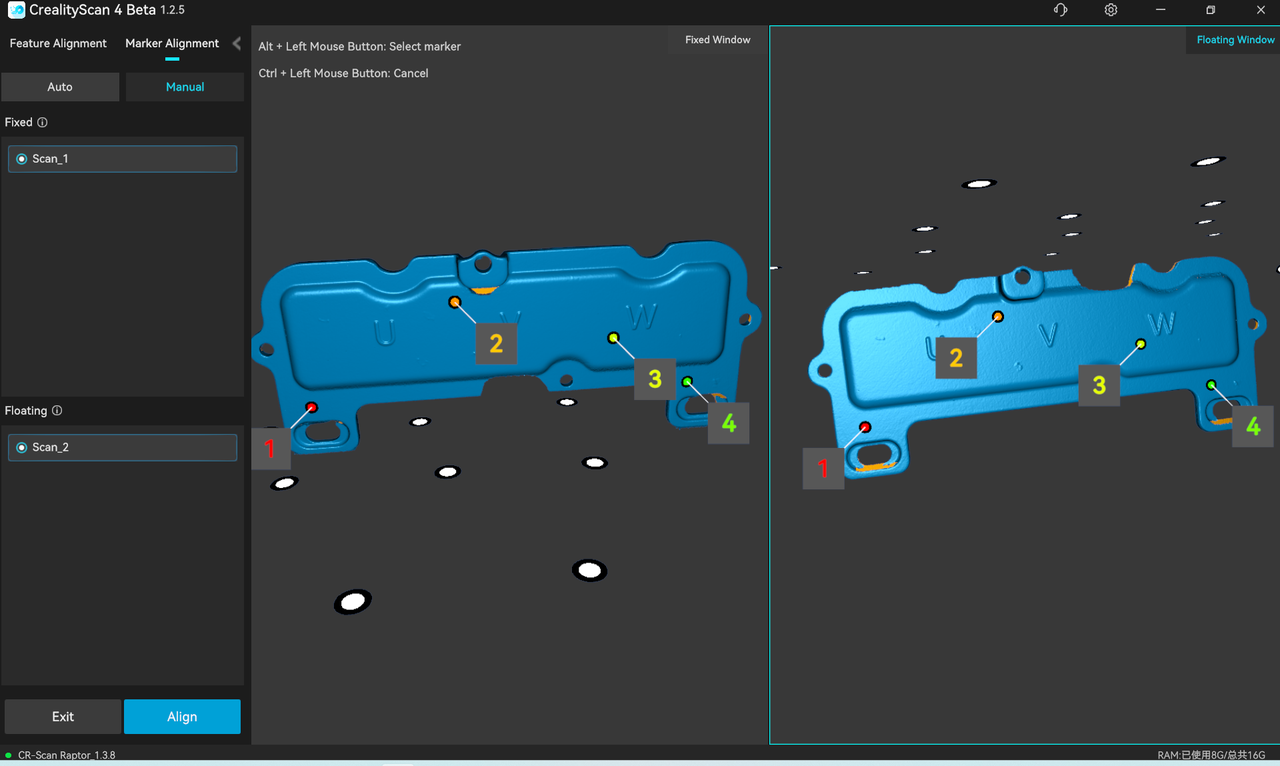
7.Generate the final mesh.
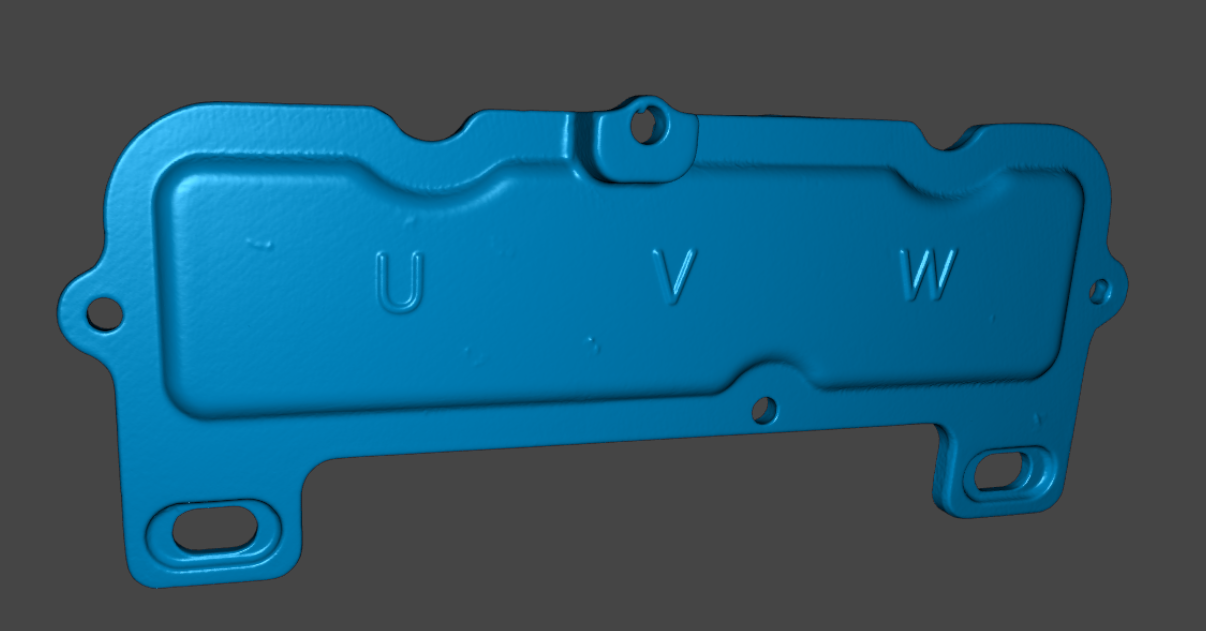
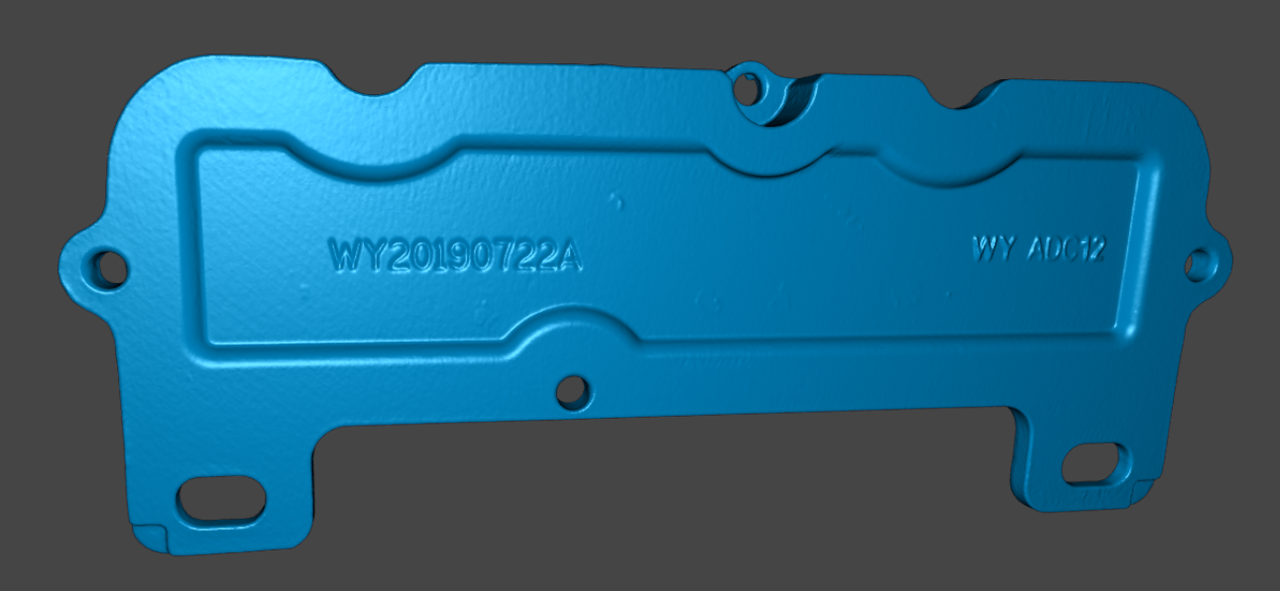
¶ Summary:
Method 1 ensures high precision and data quality but involves more steps.
Method 2 is simpler but may leave alignment artifacts if the point cloud edges are poorly captured.
Let me know if further adjustments are needed!